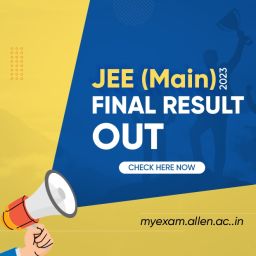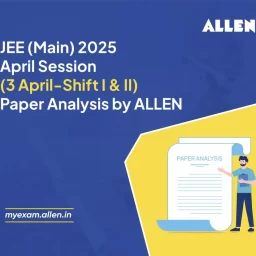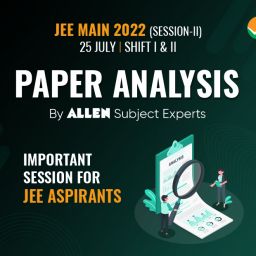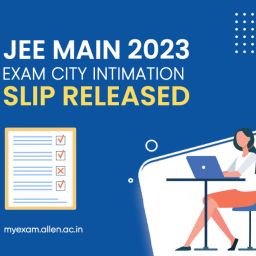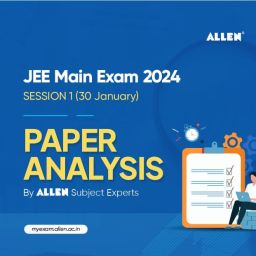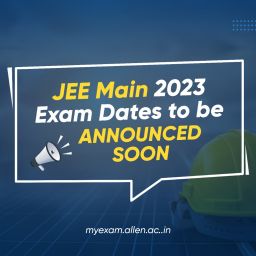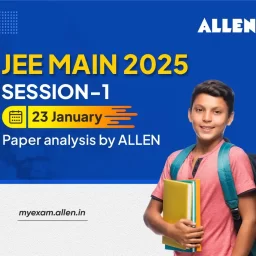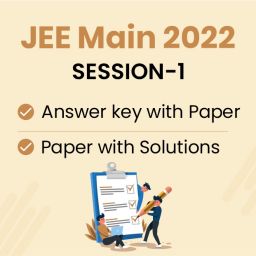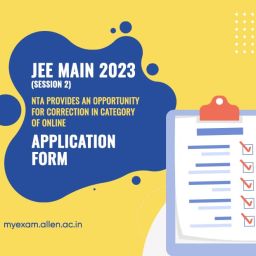Maths in Morning Shift and Chemistry in Evening Shift Were Difficult
Thursday was the sixth day of the April session of JEE-Main 2023, the country’s biggest engineering entrance exam being conducted by the National Testing Agency. On the basis of students’ feedback and responses received on CSAT, it can be said that Chemistry paper was tougher than Physics and Maths on the sixth day. Maths paper was also tough but the difficulty was less than other days.
Physics
As per the feedback received from the students, the morning shift paper was easy. Most of the questions were formula based. Some questions were theoretical i.e statement based. Questions were asked from almost all the chapters from class 11th and 12th. Questions were asked from Error, One-D Kinematics, WPE, Impulse Equation, Rotation, Elasticity, KTG, Fluid, SHM and Gravitation topics. Questions related to WPE to Power, KTG to RMS Speed and Gravity to Escape Speed were asked.
In class 12th topics, questions came from current electricity, MEC, EMI and EM wave. There were questions related to EMI to LR circuit, EM wave to Maxwell equation. Three questions were asked from Modern Physics. Question was also asked on Q value. Logicgate based question came from Semiconductor. Match the column type questions came from Principal of Communication.
The paper was easy in the 2nd shift as well. The number of statement based questions were 3-4. The questions came from class 11th topics Unit Dimension, Error, Kinematics 1D, Circular Motion, WPE, Rotation, Heat Transfer, KTG, Laws of Thermodynamics, SHM, Gravitation, String Wave. Similarly, questions were asked from Class 12 topics like Geometrical Optics, Electrostatics, Capacitance, MEC, EMI, AC, EM Wave and Wave Optics. One question each was asked from Modern Physics, 2-3, Semi-conductor and Communication.
Chemistry
The paper came easy in the morning shift. In which inorganic chemistry was the easiest, organic chemistry was moderate and physical chemistry had most of the conceptual numerical questions. All types of questions were asked in the paper. In which there were single correct, statement type, match column and numerical. In physical chemistry, mole concept (back titration), redox, real gas, liquid solution, chemical kinetics, thermochemistry, ionic equilibrium and numerical of electrochemistry were there.
In Organic Chemistry, there were questions from IUPAC nomenclature, GOC, halogen derivatives, alcohol-ether, hydrocarbon, amide, biomolecule and polymer. In Inorganic Chemistry, questions related to Periodic Properties, Chemical Bonding (2), Coordination Compounds (Match Column), Metallurgy (Mis Match), P and F Block and Environmental Chemistry were asked.
Chemistry paper was tougher than Physics, Maths in 2nd shift. In which the statements given in the questions were theory based. In Physical Chemistry, mostly questions were asked in numerical form. The questions from Inorganic and Organic Chemistry were in the form of single correct option. In Inorganic Chemistry, questions related to Coordination Chemistry (2), Salt Analysis, S-Block, P-Block and Environmental Chemistry were asked. In Organic Chemistry, there were questions from IUPAC Nomenclature, POC, Halogen Derivatives, Alcohol-Ether, Biomolecule and Polymer (Match Column). In Physical Chemistry, questions were asked from Mole Concept, Solid State, Liquid Solution, Electrochemistry, Surface Chemistry, Thermodynamics, Ionic Equilibrium and Chemical Kinetics.
Maths
In the morning shift, the paper was of moderate to difficult level. Like the previous days, on Thursday also the paper came with lengthy calculation. Nine-ten questions were asked from Algebra. In which sequence series, modules, determinants, metrics, P&C, probability and complex numbers topics were covered. Three questions came from Coordinate Geometry. Which were from Circle, Ellipse and Hyperbola. There were 7-8 questions from Calculus. Which were from Limit, Continuity, Application of Derivative, Definite Integration, Area under Curve, Differential Equation and Inverse Trigonometric Function. There were four-five questions from Vector and 3D. There were two questions from statistics, one question each from reasoning and relation.
The difficulty level in the 2nd innings was three out of five which means the paper was of moderate level and lengthy. There were 9-10 questions in Algebra. In which questions were asked from Quadratic Equations, Sequence and Series, Matrix, P&C, Probability, Binomial Theorem topics. Three questions came from Coordinate Geometry. In which straight line, circle and hyperbola topics were covered. Eight questions came from Calculus. In which questions were asked from Function, Inverse Trigonometric Function, Integration, Differential Equation and Area Under the Curve topics. One question each was asked from Complex Numbers, Statistics, Relation and Reasoning.
Recommended Read Blogs:
- Check JEE Main 2023 Session 1 Toppers List
- Study Hacks of the Toppers – Key to Success
- Tips for Students to Build a Strong Foundation
- JEE Main 2023: Exam City Intimation Slip Released
- Benefits of Daily Routine for Success in JEE and NEET
- Last 1 Month Strategy for JEE Main 2023 Session 2 Exam
- ALLEN Digital Major Online Test Series for JEE & NEET Preparation
- 8 Students of ALLEN Scored Overall 100 Percentile in JEE Main 2023
- JEE Main April Session Exam Starts, Paper Level Same as January Session



